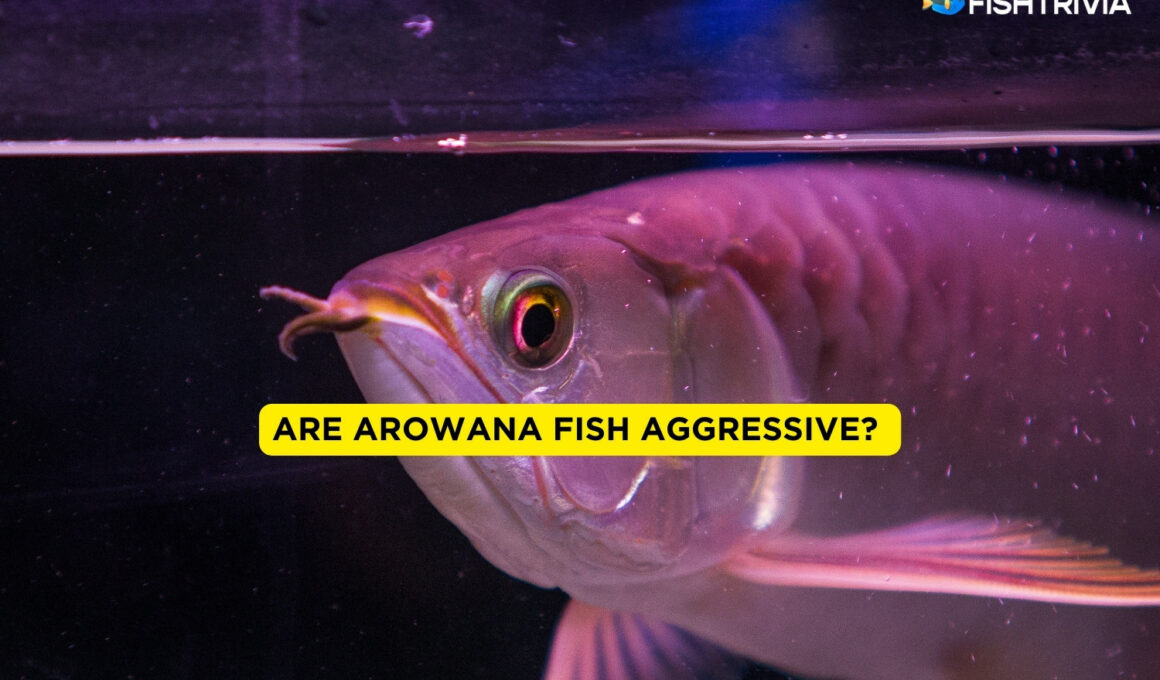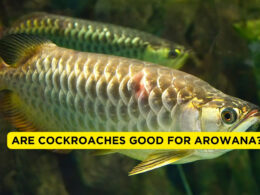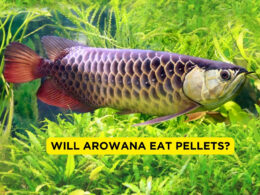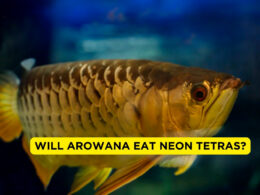In this article Show
This type of fish is also called the dragon fish, and it is a fascinating type of species in the aquarium hobby. It is mostly found in Australia, South America, and Southeast Asia. According to statistics, it has been there for a very long time (hundreds and hundreds of years).
These species are also referred to as “bony tongues” as they have one toothed bone on the lower part of the mouth. The function of this tooth is to bite against the roof of the fish’s mouth.
This Arowana fish has a very long body with very large scales and other fragile and dark barbells. The barbells are two, and they extend from the fish’s bottom lips.
This fish is usually very expensive and can survive up to twenty years if taken good care of by an experienced aquarist. However, if you keep the fish in small tanks, they are more likely to get stunted growth, and their lifespan will be reduced.
Also worth reading;
- Why Are Asian Arowana Illegal? You Should Need to Know
- 19 Best Arowana Tank Mates (With Pictures)
- Why Are Asian Arowana So Expensive? (Explained)
- Why Does Arowana Jump Out of the Tank? [Possible Reasons]
- Asian Arowana Care Guide: Habitat, Tank Size, Breeding
How Aggressive Can The Arowana Fish Species Be?
You should know that this Arowana fish is a carnivore, and it can jump to very high heights for food. Approximately this type of fish can jump six feet and above from the water’s surface to catch birds and insects.
They eat anything that fits their mouths regardless of the taste or such. The Arowana fish easily attacks other species in the aquarium, and more so, they even fight other species and their kinds.
There are different Arowana species, and they all tend to be territorial black and silver species. The more the Arowana grows, the more territorial it becomes, and thus it becomes very hard to keep more than one grown Arowana fish in one tank.
However, some Arowanas have been paired into different species. For example, Siamese tigerfish, jaguar cichlids, clown knife fish, stingrays, and peacock bass.
If you need to keep a different species in the same tank with the Arowana, then the species should be very big that it cannot fit the Arowana’s mouth and should also not dare bully the Arowana.
The Most Aggressive Arowana
The most aggressive Arowana has been the Australian type. It originated from south-central New Guinea and Australia.
The Australian Arowana is mostly adapted to pools, billabongs, and the gentle parts of rivers or streams.
This type of fish is one of the small Arowana species. It is easily noticeable as it has pinkish or reddish spots around the scale edges. This kind of fish needs a very big swimming space.
The Australian Arowana appears the most aggressive as it does not tolerate any other kind of species around it, and once it gets to 12 or 14 inches, it is impossible to have a tank mate.
How To Deal With The Aggressive Arowanas
The main reason why an Arowana can get excessively aggressive is stress. Therefore, always make sure that your Arowana is not stressed up. It also gets more aggressive if it is not well-fed.
Also, if the conditions are not favorable, the Arowana will get more aggressive. To avoid this, always check the quality of the water. If the water has reduced, add more immediately.
When feeding the Arowana or cleaning the tank, you should take maximum care as the Arowana can bite you. Unfortunately, there are very many cases of Arowanas biting aquarists.
Biting mostly occurs when the Arowanas are feeding on one tank and competing to get the pellets. Therefore, if you have more than one Arowanas in a tank, it is always advisable to use dividers, for example, a net, to prevent the Arowanas from biting you.
In cases where the Arowana is breeding, it can be more aggressive though this rarely happens in the tanks.
During breeding, the male Arowanas are the most aggressive as they protect the female Arowana, and he also scoops eggs in their mouth after fertilization is complete. This makes the female Arowana chase him, and thus they tend to be very territorial.
In such circumstances, the male Arowana does not feed until the eggs hat5ch, does not allow any fish close to him, and he only depends on his reserved fat for about six to eight weeks.
It is possible to keep Arowanas together at a younger age as they are not too aggressive. Here, they can be kept in groups of six or more. However, as time goes by and they approach their maturity age, they become more aggressive and territorial, so you need to separate them.
If you need to keep adult Arowanas, then you must have a big farm or pond. With a large farm, it is possible to keep six Arowanas or even more in setups and divide their territories using dividers such as nets.
Feeding The Arowana Fish
The Arowana fish feeds on anything that fits its mouth. For example, Arowana fish can feed on amphibians, small fish, arthropods, birds, insects, and mammals.
If in the wild, the Arowana will choose to feed on crustaceans and small fish. Getting food when in the wild is not tough on them as they swim below the water’s surface and then jump and catch their prey. To prey on fish, they swim beneath them and then scoop them.
Conclusion
When Arowanas are breeding, the courtship period is usually two months or more. It is easy to identify them when they circle each other in this condition, displaying their fins. They also nip at each other, which helps the release of eggs and sex hormones.
The male Arowana is usually very attentive during this period. Breeding is mostly done in extensive farms in Southeast Asia and South America since the areas are hot and the best condition for breeding Arowanas.
Choosing the best breeding mate for Arowanas is usually a tough thing for aquarists as it is not always assured that they will respond to the given mate.
The aquarists usually choose around six to seven mates if the female Arowana does not respond positively to the given mate. Therefore, you should always be keen when keeping Arowanas and know the Arowana species you are keeping.










